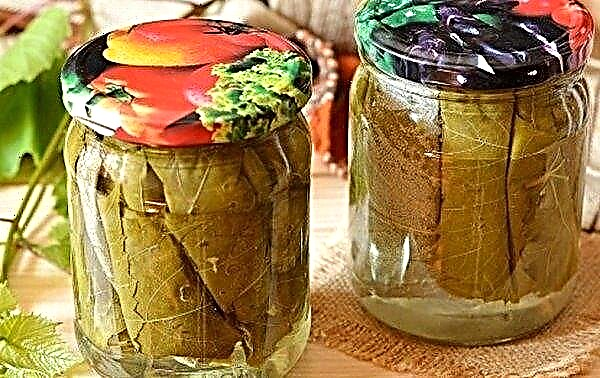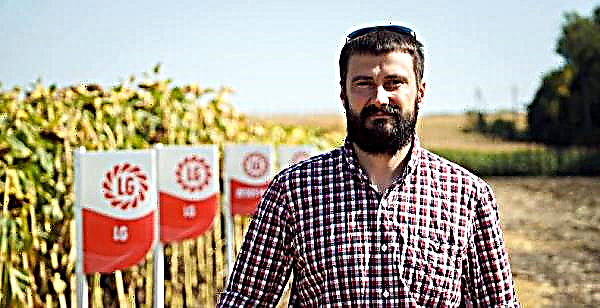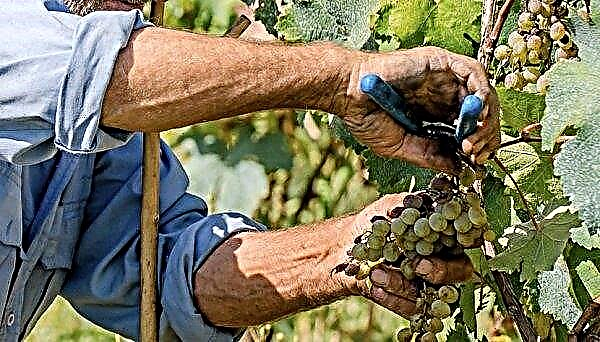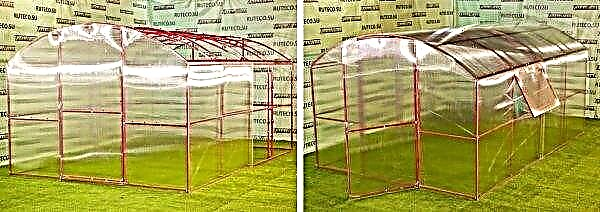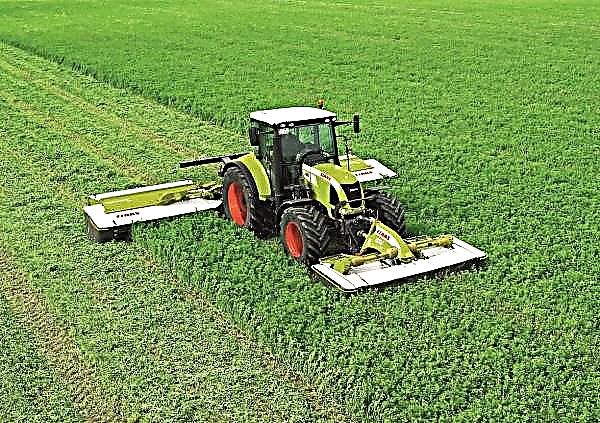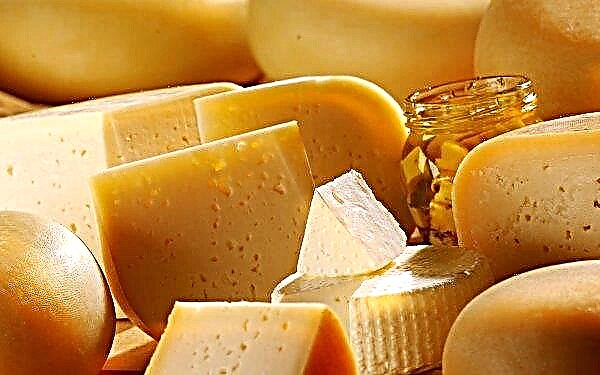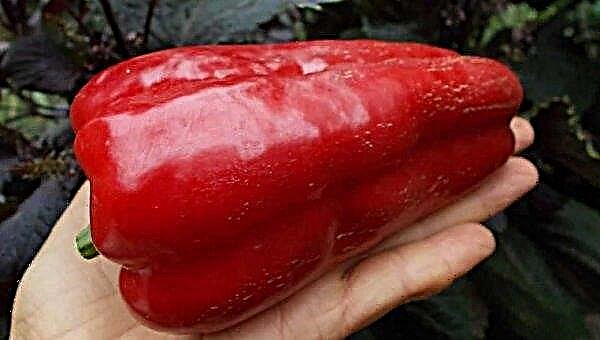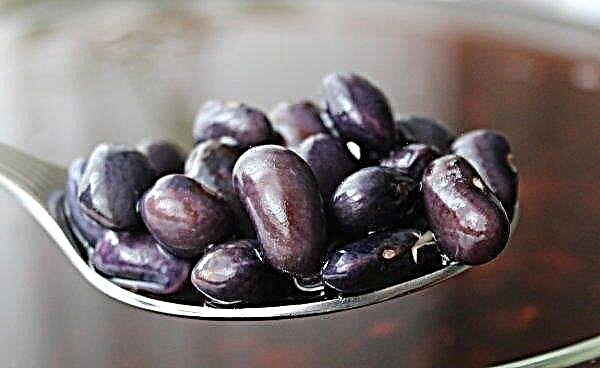This article will discuss white radish, namely its best varieties with a detailed description of the features, as well as methods of cultivation and subsequent care.
Useful properties of white radish
Radish contains a large number of useful substances, including fiber, essential oils, vitamins and minerals. In addition, the calorie content is only 15 kcal per 100 g of product, which allows radishes to be added to the diet of people who want to lose weight.
Did you know? In order to get rid of a headache, it is enough to lubricate the whiskey and nose bridge with radish juice.
- Also, culture has a beneficial effect on the human body:
- prevents the formation of cancer cells;
- strengthens the protective functions of the body;
- acts as an antidepressant;
- natural antiseptic;
- removes cholesterol;
- dilutes blood;
- cleanses the body and improves digestion;
- relieves pain with joint pain.

The most popular varieties and their description
Below is a description of the most popular varieties of white radish.
Glowworm
The mid-ripening variety was developed in the Czech Republic, in 1998 it was entered in the State Register and recommended for cultivation on open ground in the central region. The rosette of the plant belongs to the growing ones. The leaves are yellow-green, slightly dissected, medium in size. The surface is slightly pubescent. The form is egg-shaped.
The fruits are even and elongated, narrowed towards the end. The surface is smooth, white. The pulp is light, soft texture, a little translucent. During growth, the root crop goes deeper into the ground by 1/4 of its length, which is 6–8 cm. The mass of radishes is about 20–25 g. Productivity is 1.6–2.4 kg / m². The growing season lasts 35–38 days.
White Fang
Variety intended for cultivation in open ground. It grows in 33–42 days. The vegetable is smooth, cone-shaped up to 12 cm long and weighing up to 20 g. Peel and flesh of white color. The latter has a slightly island flavor and retains its nutritional properties for a long time. Harvested crops are stored for about 3-4 months. From 1 m² receive up to 1 kg of fruit.
Alba
Variety of Belarusian selection, bred by the Institute of Potato and Vegetable. Since 1981 it is admitted to cultivation. Root crops are oval with a small indented head. The surface is smooth and white.
Did you know? Radish contains a large amount of ascorbic acid, and 250 g of the product provide the body's daily need for this substance.
It grows about 2.9–5.9 cm long and weighs 23–25 g. The pulp is dense and juicy. The variety is classified as mid-season, the vegetation period of which lasts about 23–32 days. Productivity - 1.2–1.8 kg / m².
Icicle
Mid-season variety with large fruits. It got its name due to the appearance and whiteness of the color, similar to an icicle. From the time of planting to harvest, a period of 35–40 days is required. The root crops are elongated, conical, snow-white in color. The length is within 15 cm, weight - 50 g. As for the taste, the texture of the vegetable is dense and juicy, a bit sharp.
Virovsky white
The variety has been cultivated since 1956, also known as the Polar Bear. The radish rosette is sprawling and grows about 15 cm high. It is formed by 6–9 oval, slightly pubescent, whole leaves painted green. The fruit is round, 3-4 cm in diameter. The surface is white, sometimes at the base it can be painted in a light green or lilac hue.
Important! Frequent use of radishes is contraindicated for people suffering from a violation of the functions of the gastrointestinal tract, as this provokes an exacerbation of ailments.
The structure of the root is tender and oily. They grow when completely immersed in the soil. The average weight indicator is 20–30 g. The variety is mid-season; it grows in 26–32 days. Productivity at the level of 1.6–2.2 kg / m².
Daikon
Sufficiently large-fruited variety originally from Japan. It is a rosette of dissected foliage of bluish-green color, which grows up to 60 cm in height. The root crop is immersed in the soil at 2/3 of the length and spetset for 40-60 days. Vegetable of snow-white color, conical elongated shape. As the root narrows, it changes its taste: the top of Daikon is sweet and the tip is sharp. The radish is about 40–50 cm long and weighs about 5 kg. Productivity can reach 500 kg / m².
Methods and conditions for growing white radish
The soil after such crops is considered suitable for sowing:
- cucumber;
- tomato;
- potatoes;
- legumes.
The soil is prepared in the fall, removing all residual biomass and digging.
Fertilizing at the same time, per 1 m²:
- 1 bucket of compost or manure;
- 15 g of superphosphate;
- 20 g of calcium chloride.
In the spring, before planting, the soil is dug up and beds 15 cm high are formed. Before the procedure, the soil is watered with a warm solution of sodium humate and a 2 cm deep hole is formed with a sharp stick at an interval of 3 cm. A couple of seeds are placed in each well and filled with soil mix from the ground, humus and sand in a ratio of 2: 1: 1, respectively.
Important! It is necessary to observe the depth of radish sowing, because with excessive deepening, the root crops grow too elongated, and the reverse situation - the surface root system is formed and the plant lacks nutrients.
After which they are slightly tamped. On the 5th day shoots germinate. When the plant releases a couple of leaves, the plantings are thinned out, leaving the strongest sprouts, observing an interval of at least 5 cm. The technology for growing the crop in the greenhouse and on the open ground differs only in terms of planting.
In the greenhouse
In greenhouse conditions, the planting campaign begins in March-April, when the air temperature reaches + 10 ° C. After emergence, the indicator is kept at +18 ... + 20 ° С.
In the open ground
Radishes are sown in early June, and in a warmer climate, you can start even in May.
Video: a little trick when planting radishes
White Radish Care
After completing the planting procedure, you must create the necessary conditions for the full growth of young shoots.
Watering
Irrigation should be moderate, as the root crop cracks from excess moisture, and from a lack - it becomes hollow, bitter and will release arrows. Based on this, the soil is moistened as it dries. Do it daily in the early morning or after 17.00.
Weed removal
After each irrigation procedure, the soil is loosened and weed is removed.
Disease and Pest Prevention
The most dangerous radish disease is considered:
- Bacteriosis, which is characterized by yellowing of the green mass and decay of the rhizome. They are treated by spraying the planting with a 1% solution of Bordeaux fluid.

- Blackleg - an ailment that affects the plant in the seedling stage and leads to yellowing of the foliage and blackening of the base of the outlet. To combat the causative agent of the disease using spraying with a solution of copper sulfate, in the calculation of 1 tbsp. l the drug per 10 liters of water, with the addition of 50 g of crushed laundry soap.

When growing white radish, pests can become a threat:
To combat these pests, it is necessary to spray the seedlings with the following solution, per 10 liters of water it is necessary:
- 2 glasses of ash;
- 50 g of laundry soap.
Important! A cruciferous flea can destroy the entire planting of a young radish in just a few days, so it is necessary to take measures to combat it in a timely manner.
Harvest Dates
Harvest as it ripens, depending on the characteristics of the variety. They hold the event in the morning, in the evening abundantly watering the beds. Radish is taken by the tops and pulled out of the soil, after which the remaining soil is shaken off. The green part is cut off, leaving 2-3 cm at the base.
The collected fruits are placed in plastic bags and placed in the refrigerator, where they are stored for no more than a week, as over time the product loses its taste: it rancid and becomes lethargic. Undoubtedly, radish is a low-calorie and rich in useful substances product. They grow it in a relatively short time, which allows you to get several crops per season. The best varieties of white radish are described above, as well as recommendations regarding its cultivation.
Undoubtedly, radish is a low-calorie and rich in useful substances product. They grow it in a relatively short time, which allows you to get several crops per season. The best varieties of white radish are described above, as well as recommendations regarding its cultivation.




